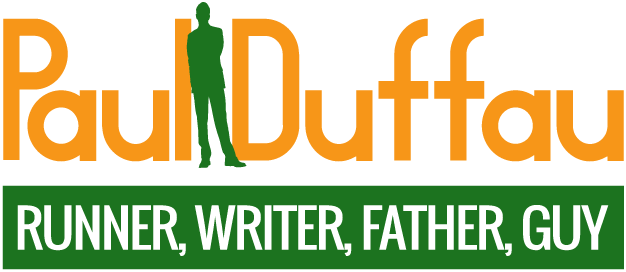Runners Aren't Solitary
The idea of the solitary runner, devoted to the sport like a monk to his order or committed to it like a convict, depending on whether you favor Once a Runner or The Loneliness of the Long Distance Runner, runs counter to the actual evidence.
Both stories, one American, one British, involve the isolation of the individual and the starkness of the decisions that they make as runners. That makes for compelling fiction but falls short in expressing the runners as actually exist. Mind you, this is not a complaint against either—fiction writing, by its nature, dramatizes and expands the human experience. These books did both outstandingly well by focusing on a single aspect, the solitariness of their paths and the determination to trod it in their own fashion.
That doesn’t describe the majority of us. For evidence, I point to the large number of running groups that gather weekly to run together, train together, and race together. The truth is that running is a communal activity, one that probably is hard-wired into our genes. In Born to Run, Chris McDougall recounts the stories of the African Bushmen on the hunt, the Tarahumara playing their running games, and the incredible sight of one of the best ultrarunners in the world, Scott Jurek, standing wrapped in a blanket to cheer on the last finisher.
Even Micah True, aka Caballo Blanco, the ultimate loner, jumped in to pace the Tarahumara at Leadville and later organized the races that would become famous in the book, not for himself, but for the villages in the Copper Canyons.
Less extreme examples make an appearance every weekend in a town close to you. If the local running group isn’t out for a training run, they’re out racing or helping organize a fundraiser of a race. After that comes the gathering for coffee, if not a full breakfast.
We don’t always run in packs, the way cyclists do, but we give each other encouragement on the trails, quick smiles or an honest “Great job!” on passing. We wave, and yes, we try to figure out who’s faster. It’s human nature.
This comes to mind because cross country practice has begun, and I have a new generation of kids that I’m coaching. Already I can see them starting to bond. For the returnees, the first day of practice is like stretching a muscle memory, remembering how this team, this community, practices and plays together.
Kids that I’ve heard slam each other with insults in the hallways unabashedly cheer on their teammates during the practices. Soon, they will do the same at the races. They also cheer on the other team, which I think is a unique feature of running. When Duke played Wisconsin for the NCAA Championship, I don’t think anyone cheered for both at the same time, yet I see people and runners do it all the time at local cross country races.
Someone once said, and I have unfortunately forgotten who, that English is a wonderful language because it has words for both alone and solitude. Running, cross country racing, is similar.
It’s a solitary activity that most people do with a group, a race that we want to win and want the other bloke to do well.
Run gently, friends. Give a shout out to the next runner you meet – he or she is part of your tribe, after all.
